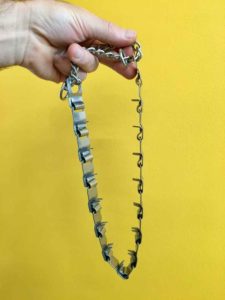Updated November 28, 2020
It seems like that, doesn’t it? You search for a “dog trainer” in your area and instead of a simple answer you get all this:
- Dog Obedience
- Positive Training
- Dog Whisperers
- Behaviourists
- Private vs Group Classes
It’s not even clear what the differences are. At last not yet. But you don’t want to find that out the hard way.
Let me help. I have no vested interests and over 25 years of watching thousands of dog owners make both good and bad decisions. You’ll see that I do have a clear picture of what’s most likely to work but I also want you to see why.
Let’s start with some simple definitions.
- A dog trainer is basically anyone, good, bad or indifferent, who tries to modify a dog’s behaviour
- A behaviourist or a behavioural specialist may also be a general term, but is mostly used by people who have some formal dog training qualification
- Dog obedience usually refers to the traditional style of teaching dogs mostly by command and control
- Positive or force-free training is instead done by shaping behaviour using only rewards
- A dog whisperer is someone who believes they have a unique or special skill that transcends traditional methods
The problem with these terms is that they are chosen by the person themself. You’ll also find that many dog trainers are in, or put themselves in several categories. Therefore, although the job title gives a rough idea of the methods used, you need to dig deeper.
The answer is not to look just at the names, but at the methods themselves. You need to know what to look for, and what questions to ask.
How To Choose A Good Dog Trainer
What follows are my opinions on how to avoid the pitfalls and find the best trainer for your dog. Then I’ll tell you what happened to my dog, Zabel.
It’s Not A Dog Eat Dog World
Rule 1: if someone tells you your dog is dominant, an alpha dog, that you need to dominate, alpha roll or be a pack leader, thank them kindly. They have made your choice easy. Stay away.
Dominance theory is thoroughly debunked by science but still lingers in the popular imagination. The speaker is betraying their lack of knowledge. In true ‘vitamin-C-cures-colds’ fashion, the original 1947 paper was dire and would never pass muster today.
Trainers who see the world through the lens of dominance theory tend to be blind to the importance of anxiety and fear in dog behaviour. Owners who unknowingly choose their methods often end up with dogs superficially better but fundamentally worse.
You Can Lead A Horse To Water…
So if dominance isn’t the answer, what is? Here good science comes to the rescue.
Rule 2: Positive methods are more effective than methods involving punishment or discipline. Study after study shows that dogs learn better when given an incentive than when avoiding something bad.
I’m sorry, but that includes choker chains, check chains and even saying “no”. There are many ‘obedience’ dog schools full of lovely people who really try to do their best, but the evidence is against them. Their methods may work, but reward-based training works better.
Many Hands Make Light Work
What about dog whisperers? There’s something very appealing about their black and white view of the world. However, life’s not that simple, and the best way I can say it is with music. Here’s one example of many:
- The Beatles: groundbreaking band that changed the face of popular music
- Lennon, McCartney, Harrison, Starr: good musicians with some very good songs
This is the genius of humanity and the secret to our success. You can take a group of individually skilful people and out of them comes something greater than the sum of its parts. We are a cooperative species.
Dog whisperers claim to have a successful method, and it probably does work most of the time. However, I see the failure rate, and it’s too high. Just one strategy is the weakness of any solo operator, and also of the franchise models of dog training.
I’m a long way from perfect, but I’m a much better vet now that I get to work with three other smart people. I don’t have all the answers. I’d be very wary of anyone who even suggests they do.
Don’t Believe The Hype
Rule 4: take personal recommendations and reviews with a grain of salt. My observation is that it’s very rare for dog owners to be able to see the faults in the training method they have chosen. This is probably because dog trainers are a very likeable and charismatic bunch who genuinely believe in what they do.
It’s also because all methods are effective to at least some extent. Only someone like me who gets to see all the strategies can compare them.
Recognise The Special Needs Dog
Lastly, dog training isn’t for everyone, and many failures result from a square peg being relentlessly hammered into a round hole. If you choose the right dog trainer they will recognise this straight away.
- Sometimes it’s the methods that don’t suit
- Other times a dog just doesn’t do well in groups
- Or maybe a dog just needs a lot more one-on-one time than classes can provide
These are the dogs that will benefit from private classes. But not just any class.
Here’s where I’m going to make my recommendation clear: choose a positive dog trainer. These are the people most likely to have had advanced training and use methods that are least likely to do harm if your dog isn’t suitable. They will have a range of methods at their disposal, and almost always work in a collaborative approach.
If you live in Adelaide, suitable group training classes are listed here. For individual needs, you will find a link to RSPCA-approved trainers on this page. And of course, wherever you live, you can always ask your vet for their personal recommendations.
Zabel’s Story
My rescued dog Zabel suffered at the hands of bad trainer choices. I knew and loved him as a puppy and watched his descent into darkness with great distress.
His only fault was being a big, strong and energetic labrador cross. In the right hands, he would have had amazing potential. Instead, when he started being too much for his owner, she took him to a dog trainer who ticked all the boxes.

- He was a dog whisperer
- He didn’t recognise Zabel’s dog anxiety
- He believed that Zabel was trying to dominate her
- He used a ‘prong’ collar (as bad as it sounds)
Now let me show you how people can be blind to their trainer’s faults. Even as the owner prepared to have him euthanased due to his behaviour, she told me how wonderful the trainer had been.
Our family took him instead. Nine months later, intensive daily training and medication had partly undone the damage done. I rehomed him carefully, with full disclosure of his history*.
The trainer involved continues to see dogs to this day, and I can’t stop him. Follow my advice and at least it won’t be yours.
Share it and you might save someone else’s.
Related: Anxiety in Dogs | The Evidence That Puppy Classes Work
* I apologise that I can’t go into more detail out of respect for his new owner.
Have something to add? Comments (if open) will appear within 24 hours.
By Andrew Spanner BVSc(Hons) MVetStud, a vet in Adelaide, Australia. Meet his team here.


Thank you, Andrew, for your regular, excellent advice. I have enjoyed 6 years with a beautiful GAP greyhound, now aged 8 years. Because of foot problems she never raced. She is the most gentle, friendly and naturally well-behaved soul we could ever have wished for.
6 years ago we also adopted a small, one-year-old dog from a shelter. At first he was very nervous, he didn’t want to go for walks, and had shaking attacks often. I sensed his need for constant company and support, which I was able to give him, being retired. I cuddled him for hours every day, and he slept in bed with me every night (and still does.) Once he decided to try the offered walks he became as keen as any other dog, and now shows the utmost joy when allowed to run free, especially on the beach.
He now is a delightfully loving, funny, playful little boy with few remaining signs of his difficult first year except for two: the first is that although reasonably well toilet trained he occasionally fails to go outside. I have accepted that he will probably never outgrow this, and simply try to avoid incidents by encouraging him to visit the garden with me several times during the day. The second thing which is more serious is that he cannot be trusted with small children, and in fact once bit a little boy, fortunately just a nip. However I would not leave a small child alone with him. He has become extremely attached to me (though does not show signs of separation anxiety.) This worries me a little bit, in case he should outlive me. However, he and our dear greyhound have enriched our lives more than I can describe, and it is a privilege to have been able to share our home with them.